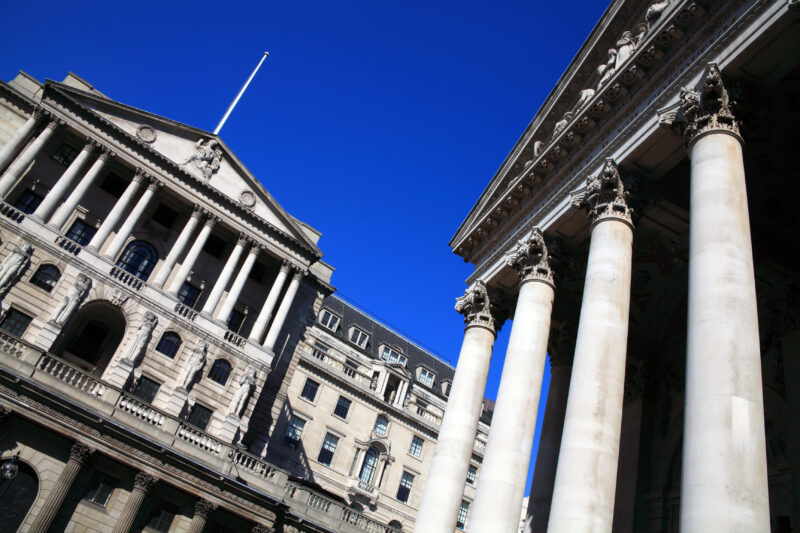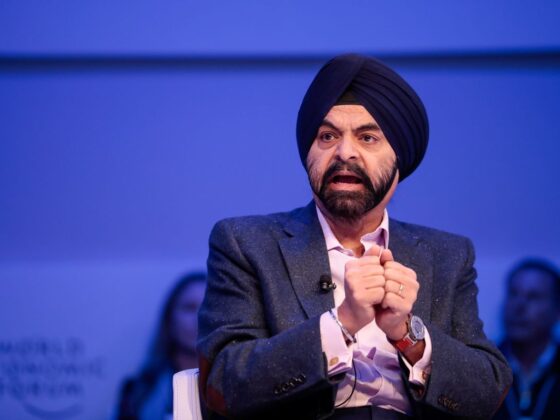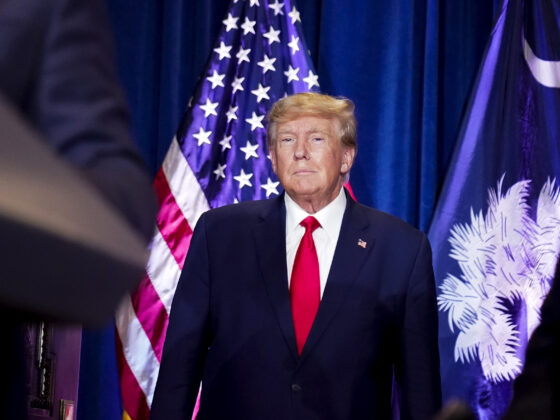“I am a Rothschild.”
Would you believe me if I said it? Probably not. But this simple phrase would trigger a reaction in your head. Everyone has a certain thing to say about the Rothschilds. It doesn’t really matter if you are an anti-semite who loves to indulge in the thought that all Jews are evil and everyone else is a saint, or if you have a thing for alt-right bullshit like “The Rothschilds have a space laser with which they accidentally caused the 2018 wildfire in California when they attempted to clear path for a high speed railway.“
Or maybe you believe that every central bank – recently apparently with the notable exception of the Russian one – is controlled by that one family.
We can by no means deny that the family of Rothschild hasn’t wielded incredible power throughout the past centuries – and continues to do so. But when looking at this, we should zoom out and look at the construct in its entirety. Because that’s where the interesting things happen.
A historian’s ability to write an “objective” history is not simply limited by the sheer volume of happenings, but by the fact that many of the most important happenings never appear in the papers or even in somebody’s memoirs. What the “Big Players” are deciding in their smoke-filled rooms while patting each other’s back for fucking up the world a little more is not reported in corporate media. It hardly is being reported anywhere. Even today no one actually does report on it. Alternative news sites often attempt to report on it but lack sources as to why their entire narrative can almost always be framed as “conspiracy”.
A historian must in order to build his case select from a miniscule number of facts from the limited number that are known. If he does not have a theory, how does he separate important facts from unimportant ones? This is why every book, every article, every newsletter, “proves” the author’s thesis. But none of these things is objective. This text, too, is not objective.
Most of the facts which I bring out are readily verifiable at any large library or beyond the censored search results of any google query. But my intention is to arrange these facts in an order which most accurately reveals their true significance in history. These are the facts the establishment does not want you to know.
As an example in current affairs: A lot of the (s)chitchatting on social media these days regarding of the Ukrainian situation is from people who appeared to have walked into a mystery movie two-thirds of the way through and then felt the need to tell everyone who the murder is. They look at the current, curated evidence and everything points towards the butler being the murderer, but in the final scenes they find out, surprisingly, that it was the man’s wife all along. You have to stay to see the beginning of the movie. Then all the pieces fall into place and the story makes sense.
A lot of people all around the world have always found themselves in this situation for centuries. The thing that makes it so potentially catastrophic these days, is that everyone – no matter their opinion – feels the need to scream it out into the internet so that in the end we end up with a cacophony of voices and no one has any idea what is actually going on.
When talking about the Rothschilds (by the way, it is not pronounced ‘RothCHILD’) and the money manipulation of the world, we don’t have to start at the beginning, but we are going back far enough to give meaning to today’s happenings.
In order to understand the following it is necessary to have some rudimentary knowledge of banking and, particularly, international bankers. While it would be an over-simplification to ascribe the entire conspiracy to international bankers, they nevertheless have played the key roll. In fact we could name some others here: “foundations,” “the anti-religion movement,” and “Communism.” But it were the international bankers who came up with their aim of nothing less than controlling the world through finance.
“Hello, I need a loan. Sincerely The King.”
The masses are made believe that the governments borrows from “the people” through savings bonds. Actually that’s a very tiny percentage of it. Most of it is held by big investment companies, or vast banking firms, known as international banks.
For centuries international bankers made a lot of big money in the financing of governments and kings. Such an operation is faced, however, with certain delicate problems. Smaller banking operations are protected by taking collateral, but what kind of collateral can you get from a government or a king? It’s a little hard to be a banker, go to the king and simply “demand” the money back. Said king probably wouldn’t hesitate to order: “Off with his head!”
The process through which one collects a debt from a government or a monarch is not a subject taught in the business schools or universities, and most have never been in the business of financing kings and therefore probably have not given the problem much thought. But there is a way to do it and it’s a very lucrative one.
When a business firm borrows money, its creditor obtains a voice in the management board to protect his investment. Just like with businesses, governments cannot borrow money unless they are willing to give up some of their sovereignty. And that is where misery takes it course. International bankers who have loaned billions upon billion to governments surely command considerable influence over the policies of such governments. But the ultimate advantage the creditor has over a king or president is that if the ruler starts acting up the banker can simply switch to financing his enemy or rival. Therefore if you are looking to step into this lucrative business, it is probably a good idea to have a rival ready at the table waiting to unseat every ruler to whom you lend – just in case.
The House of Rothschild were the ones who were preeminent in playing this game. Its founder, Meyer Amschel Rothschild (1743-1812) of Frankfurt, Germany, kept one of his five sons at home to run the Frankfurt bank and sent the others to London, Paris, Vienna and Naples. The Rothschilds became incredibly wealthy during the nineteenth century by financing governments to fight each other.
If you look at every war in Europe, you will notice that they all ended with the establishment of a ‘balance of power’. With every re-shuffling there was a new balance in a new grouping around the House of Rothschild. They grouped nations so that if a king started to get out of line a war would start which would determine where the financing went. By researching the debt position of the warring nations it was usually determined who was to be punished.
You can probably already guess why none of this is being taught to you in history. One major reason for the deafening silence about the Rothschilds may very well be the fact that the Rothschilds are Jewish. Anti-Semites, some alternative media, prominent conspiracy theorists, even some of these uneducated athletes and prominent alt- or far-right voices and politicians have helped in making all of this a topic that no one dare to talk about. A lot of these people portrayed the entire conspiracy as Jewish. Nothing could be farther from the truth. Just as not every person who’s last name is Rothschild does necessary have to be directly involved with any of this or has to be a bad person – after all, it simply is another Jewish name.
And it is not like it’s just the Rothschilds. There are others as well: The Anglo-Saxon J. P. Morgan and Rockefeller international banking institutions have played a key role in the conspiracy as well. And these names do – as of today – appear a lot more often when researching all this stuff. There is no point in denying the importance of the Rothschilds and their satellites. However, it is just as unreasonable and immoral to blame all Jews for the doings of the Rothschilds as it is to hold all Baptists accountable for the doings of the Rockefellers.
However, the Jewish members of the conspiracy knew very well how to use all the anti-semitic bullshit that has been put out to their advantage. They used the Anti-Defamtion League as an instrument to try to convince people that every mention of the Rothschilds or their allies is an attack on all Jews – which is equally as stupid as what we have discussed before.
Since the keystone of international banking has been government bonds it has been in the interest of these international bankers to encourage government debt. The higher the debt, the more the interest. Unsurprisingly, the thing that drives government into debt quickly is a war; and it has never been uncommon practice among international bankers to finance both sides of the bloodiest conflicts in history. For example, during the American Civil War the North was financed by the Rothschilds through their American agent, August Belmont, and the South through the Erlangers which were Rothschild relatives.
While war and revolutions have been useful to international bankers in gaining or increasing control over entire governments, the key to such control has always been the control of money. It is easy to control a government when you have it in your debt. As a creditor you can demand the privileges of monopolies in state banking, natural resources, oil concessions and transportation from the sovereign. Or you can demand a radical restructuring of society from them. Just saying …
The Birth of the Fed
These international bankers did maintain their power even after those banks were theoretically “socialized.”
Naturally those who controlled the banks of Europe were eager to do the same with the United States. Our Founding Fathers had actually been far more conscious about the threat of someone controlling America through money manipulation than most Americans are today. Thomas Jefferson famously wrote to John Adams: “… I sincerely believe, with you, that banking establishments are more dangerous than standing armies…”
And, even though America did not have a central bank after President Jackson abolished it in 1836, the European financiers and their American agents managed to obtain a great deal of power over our monetary system.
“Under the surface, the Rothschilds long had a powerful influence in dictating American financial laws. The law records show that they were powers in the old Bank of the United States [abolished by Andrew Jackson].”
During the nineteenth century the leading financiers of the metropolitan East often cut one another’s financial throats, but as their Western and rural victims started to organize politically, they saw that they had a “community of interest” toward which they must work together to protect themselves from thousands of irate plebs and up and coming competitors. This diffusion of economic power was one of the main factors stimulating the demands for a central bank by would-be business and financial monopolists.
But aside from the major Eastern centers, most American bankers and their customers still distrusted the whole concept.
And now, listen up, you might recognize the following:
In order to show these idiots that they were going to need a central banking system, the international bankers created a series of panics as a warning of what would happen unless the American bankers got into line. The person in charge of conducting these lessons was J. Pierpont Morgan. Morgan is referred to by many as the top American agent of the English Rothschilds.
By the turn of the century J. P. Morgan (just in case you missed the initials) was already an expert at creating artificial panics. Such affairs were well coordinated. Senator Robert Owen, co-author of the Federal Reserve Act, who later deeply regretted participating in it, that the bank he owned received from the National Bankers’ Association what came to be known as the “Panic Circular of 1893“. It said “You will at once retire one-third of your circulation and call in one-half of your loans…”
Historian Frederick Lewis Allen talked about Morgan’s role in spreading rumors about the insolvency of the Knickerbocker Bank and The Trust Company of America, both of which rumors that triggered the 1907 panic. Answering to the question: “Did Morgan precipitate the panic?” he reports:
“Oakleigh Thorne, the president of that particular trust company, testified later before a congressional committee that his bank had been subjected to only moderate withdrawals … that he had not applied for help, and that it was the [Morgan’s] ‘sore point’ statement alone that had caused the run on his bank. From this testimony, plus the disciplinary measures taken by the Clearing House against the Heinze, Morse and Thomas banks, plus other fragments of supposedly pertinent evidence, certain chroniclers have arrived at the ingenious conclusion that the Morgan interests took advantage of the unsettled conditions during the autumn of 1907 to precipitate the panic, guiding it shrewdly as it progressed so that it would kill off rival banks and consolidate the preeminence of the banks within the Morgan orbit.”
The “panic” which Morgan had created, he proceeded to end almost single-handedly. He had made his point. Frederick Allen explains:
“The lesson of the Panic of 1907 was clear, though not for some six years was it destined to be embodied in legislation: the United States gravely needed a central banking system…”
The man who was installed to play the most significant role in providing America with that central bank was Paul Warburg, who had immigrated to the US from Germany in 1902. He and his brother Felix left brother Max (who came to be a major financier of the Russian Revolution) in Frankfurt to run the family bank (M.N. Warburg & Company).
Paul Warburg’s wife was Nina Loeb, daughter of Solomon Loeb of Kuhn, Loeb and Company, America’s most powerful international banking firm. His brother Felix married Frieda Schiff, daughter of Jacob Schiff, the ruling power behind Kuhn, Loeb. In the eighteenth century the Schiffs and Rothschilds shared a double house in Frankfurt (cozy) and Schiff reportedly bought his partnership in Kuhn, Loeb with Rothschild money. Of course, both Paul and Felix became partners in Kuhn, Loeb and Company.
In 1907, during the Morgan-precipitated panic, Paul Warburg developed a sudden interest on the need for “bank reform” and dedicated almost all of his time in writing and lecturing about it. Gracious as Kuhn, Loeb and Company must have been they had no issue in keeping him on his $500.000 yearly salary (that’s around $15 million in today’s money) while he donated his time for “the public good.”
Nelson Aldrich, known as “Morgan’s floor broker in the Senate” worked together with Warburg in promoting his “banking reform.”
Aldrich’s daughter married John D. Rockefeller Jr.
After the Panic of 1907, Aldrich was appointed by the Senate to head the National Monetary Commission. Although he had no technical knowledge of banking, Aldrich and his entourage spent nearly two years and $300,000 of the taxpayers’ money being wined and dined by the owners of Europe’s central banks as they toured the Continent “studying” central banking. They must have had such a good time. It’s a pity Instagram wasn’t around.
When the Commission returned from its luxurious junket it held no meetings and made no report for nearly two years. But Senator Aldrich was busy “arranging” things. Together with Paul Warburg and other international bankers, he staged one of the most important secret meetings in the history of the United States. Rockefeller agent Frank Vanderlip admitted many years later in his memoirs:
“Despite my views about the value to society of greater publicity for the affairs of corporations, there was an occasion, near the close of 1910, when I was as secretive—indeed as furtive—as any conspirator…I do not feel it is any exaggeration to speak of our secret expedition to Jekyll Island as the occasion of the actual conception of what eventually became the Federal Reserve System.”
Since there was nothing less at stake than control over the entire economy, some might argue that the secrecy was necessary. Senator Aldrich had issued confidential invitations to
– Henry P. Davison of J. P. Morgan & Company;
– Frank A. Vanderlip, President of the Rockefeller-owned National City Bank;
– A. Piatt Andrew, Assistant Secretary of the Treasury;
– Benjamin Strong of Morgan’s Bankers Trust Company;
– and Paul Warburg.
They were all to accompany him to Jekyll Island, Georgia, to write the final recommendations of the National Monetary Commission report.
At Jekyll Island, writes B. C. Forbes in his Men Who Are Making America:
“After a general discussion it was decided to draw up certain broad principles on which all could agree. Every member of the group voted for a central bank as being the ideal cornerstone for any banking system.” (Page 399)
Warburg stressed that the name “central bank” must be avoided at all costs. It was decided to promote the scheme as a “regional reserve” system with four (later twelve) branches in different sections of the country. The conspirators knew that the New York bank would dominate the rest, which would be marble “white elephants” to deceive the public.
Out of the Jekyll Island meeting came the completion of the Monetary Commission Report and the Aldrich Bill which ultimately could not be pushed through congress. Warburg proposed this was because of Aldrich’s name on the bill and not “Federal Reserve System”. Aldrich insisted that his name had to be put on the bill because in his view his own name was already associated to the public’s mind with banking reform.
When the Aldrich Bill could not be pushed through Congress the conspirators had to come up with another strategy. The Republican Party was too closely connected with Wall Street so the only hope for a central bank was to disguise itself and have it put through by the Democrats as a measure to strip Wall Street of its power. The opportunity to do this came with the approach of the 1912 Presidential election. Republican President William Howard Taft, who had turned against the Aldrich Bill, seemed a sure-fire bet for reelection until Taft’s predecessor, fellow Republican Teddy Roosevelt, agreed to run on the ticket of the Progressive Party.
In America’s 60 Families Ferdinand Lundberg writes:
“As soon as Roosevelt signified that he would again challenge Taft, the President’s defeat was inevitable. Throughout the three-cornered fight [Taft-Roosevelt-Wilson] Roosevelt had [Morgan agents Frank] Munsey and [George] Perkins constantly at his heels, supplying money, going over his speeches, bringing people from Wall Street in to help, and, in general, carrying the entire burden of the campaign against Taft… […] Perkins and J. P. Morgan and Company were the substance of the Progressive Party; everything else was trimming. […] In short, most of Roosevelt’s campaign fund was supplied by the two Morgan hatchet men who were seeking Taft’s scalp.” (Pp.110-112)
The Democrat candidate, Woodrow Wilson, was equally the property of Morgan. Dr. Gabriel Kolko, in his The Triumph of Conservatism, reports:
“In late 1907 he [Wilson] supported the Aldrich Bill on banking, and was full of praise for Morgan’s role in American society.” (Page 205) According to Lundberg: “For nearly twenty years before his nomination Woodrow Wilson had moved in the shadow of Wall Street.” (Page 112)
Woodrow Wilson and Teddy Roosevelt proceeded to whistle-stop the country trying to out- do each other in florid (and hypocritical) denunciations of the Wall Street “money trust”—the same group of Insiders which was financing the campaigns of both.
The Insiders’ sheepdog who controlled Wilson and guided the program through Congress was the mysterious “Colonel” Edward Mandel House, the British-educated son of a representative of England’s financial interests in the American South. The title was honorary; House never served in the military. He was strictly a behind-the-scenes wire-puller and is regarded by many historians as the real President of the United States during the Wilson years. House authored a book, Philip Dru: Administrator, in which he wrote of establishing “Socialism as dreamed by Karl Marx” as steps toward his goal. House, both in his book and in real life, called for passage of a graduated income tax and a central bank providing “a flexible [inflatable paper] currency.” The graduated income tax and a central bank are two of the ten planks of The Communist Manifesto.
In order to support the fiction that the Federal Reserve Act was “a people’s bill,” the Insider financiers put up a smoke-screen of opposition to it. It was strictly a case of Br’er Rabbit begging not to be thrown into the briar patch. Both Aldrich and Vanderlip denounced what in actuality was their own bill. Nearly twenty-five years later Frank Vanderlip admitted:
“Now although the Aldrich Federal Reserve Plan was defeated when it bore the name Aldrich, nevertheless its essential points were all contained in the plan that finally was adopted.”
Taking advantage of Congress’ desire to adjourn for Christmas (just as government loves doing today) the Federal Reserve Act was passed on December 22, 1913 by a vote of 298 to 60 in the House, and in the Senate by a majority of 43 to 25. Wilson had fulfilled to the Insiders the pledge he had made in order to become President. Warburg told House, “Well, it hasn’t got quite everything we want, but the lack can be adjusted later by administrative process.”
The Federal Reserve Act was, and still is, hailed as a victory of “democracy” over the “money trust.” Nothing could be farther from the truth.
The whole central bank concept was engineered by the very group it was supposed to strip of power. The myth that the “money trust” had been defrocked should have been exploded when Paul Warburg was appointed to the first Federal Reserve Board—a board which was handpicked by “Colonel” House. Paul Warburg relinquished his $500,000 a year job as a Kuhn, Loeb partner to take a $12,000 a year job with the Federal Reserve. The “accidentalists” who teach in our universities would have you believe that he did it because he was a “public spirited citizen.” And the man who served as Chairman of the New York Federal Reserve Bank during its early critical years was the same Benjamin Strong of the Morgan interests, who accompanied Warburg, Davison, Vanderlip et al. to Jekyll Island, Georgia, to draft the Aldrich Bill.
How powerful is the American “central bank?”
“In the United States today we have in effect two governments… We have the duly constituted Government… Then we have an independent, uncontrolled and uncoordinated government in the Federal Reserve System, operating the money powers which are reserved to Congress by the Constitution.”
Neither presidents, congressmen nor secretaries of the treasury direct the Federal Reserve! In the matters of money, the Federal Reserve directs them! No one, absolutely NO ONE, controls the “Fed”.
How successful has the Federal Reserve System been?
Meanwhile, our gold is mortgaged to European central banks, and our silver has all been sold. With economic catastrophe imminent, only a blind disciple of the “accidental theory of history” could believe that all of this has occurred by coincidence.
When the Federal Reserve System was foisted on an unsuspecting American public, there were absolute guarantees that there would be no more boom and bust economic cycles. When looking back at the past 100 years this seems almost cynical. The men who, behind the scenes, were pushing the central bank concept for the international bankers faithfully promised that from then on there would be only steady growth and perpetual prosperity.
Having built the Federal Reserve as a tool to consolidate and control wealth, the international bankers were now ready to make a major killing. Between 1923 and 1929, the Federal Reserve expanded (inflated) the money supply by sixty-two percent. Much of this new money was used to bid the stock market up to dizzying heights.
At the same time that enormous amounts of credit money were being made available, the mass media began to ballyhoo tales of the instant riches to be made in the stock market.
Montagu Norman, Governor of the Bank of England, came to Washington on February 6, 1929, to confer with Andrew Mellon, Secretary of the Treasury. On November 11, 1927, the Wall Street Journal described Mr. Norman as “the currency dictator of Europe.” Norman, a close confidant of J. P. Morgan, admitted: “I hold the hegemony of the world.” Immediately after this mysterious visit, the Federal Reserve Board reversed its easy-money policy and began raising the discount rate. The balloon which had been inflated constantly for nearly seven years was about to be exploded.
On October 24, the feathers hit the fan. Writing in *The United States’ Unresolved Monetary and Political Problems*, William Bryan describes what happened:
“When everything was ready, the New York financiers started calling 24 hour broker call loans. This meant that the stockbrokers and the customers had to dump their stock on the market in order to pay the loans. This naturally collapsed the stock market and brought a banking collapse all over the country because the banks not owned by the oligarchy were heavily involved in broker call claims at this time, and bank runs soon exhausted their coin and currency and they had to close. The Federal Reserve System would not come to their aid, although they were instructed under the law to maintain an elastic currency.”
To think that the scientifically engineered Crash of ’29 or any other grand scale financial crisis was an accident or the result of stupidity defies all logic. The international bankers who promoted the inflationary policies and pushed the propaganda which pumped up the stock market represented too many generations of accumulated expertise to have blundered into “The Great Depression.”
The investing public, including most stock brokers and bankers, took a horrendous blow in the crash, but not the Insiders. They were either out of the market or had sold “short” so that they made enormous profits as the Dow Jones plummeted. For those who knew the score, a comment by Paul Warburg had provided the warning to sell. That signal came on March 9, 1929, when the Financial Chronical quoted Warburg as giving this sound advice:
“If orgies of unrestricted speculation are permitted to spread too far, the ultimate collapse is certain … to bring about a general depression involving the whole country.
The end result, if the Insiders have their way, will be the dream of Montagu Norman of the Bank of England “that the Hegemony of World Finance should reign supreme over everyone, everywhere, as one whole super-national control mechanism.” (Montagu Norman by John Hargrave, Greystone Press, N.Y., 1942.)
And it sure does.














